Thanks to power tools, you can quickly perform most of the building processes that used to take a long time. One of these irreplaceable "assistants" is a screwdriver. Some of its types are used in minor repairs, furniture manufacturing, car-care centers, and other professional models are constantly involved in construction. The market offers a large range of screwdrivers, so you need to know their key parameters and range of values so as not to overpay for unnecessary power and functionality, but at the same time not to get a device that will be inconvenient to use or that can not cope with specific tasks.

Contents:

The best firms for the manufacture of screwdrivers
Best firms for the manufacture of screwdrivers
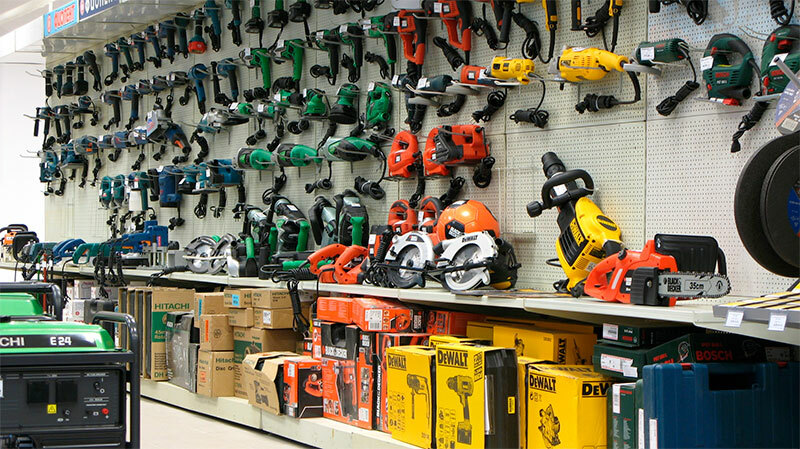
When choosing a screwdriver, it is worthwhile to rely only on proven manufacturers thathave gained a positive reputation among experienced users of this product category. If you study all the features of the choice of screwdrivers laziness or no time, you can pay attention to the products of the companies that are recognized as the best in the manufacture of this power tool:
1. Hitachi
2. Bosch
3. Metabo
4. Makita
5. Dewalt
The cost of products from the leaders of the construction market of power tools can differ from the goods of little-known firms, but in terms of quality there is complete certainty. For those who want to not only understand the distinctive features of the screwdrivers, but also consider specific models, it is worth reading the article the best screwdrivers for the home.
Operating principle and screwdriver device
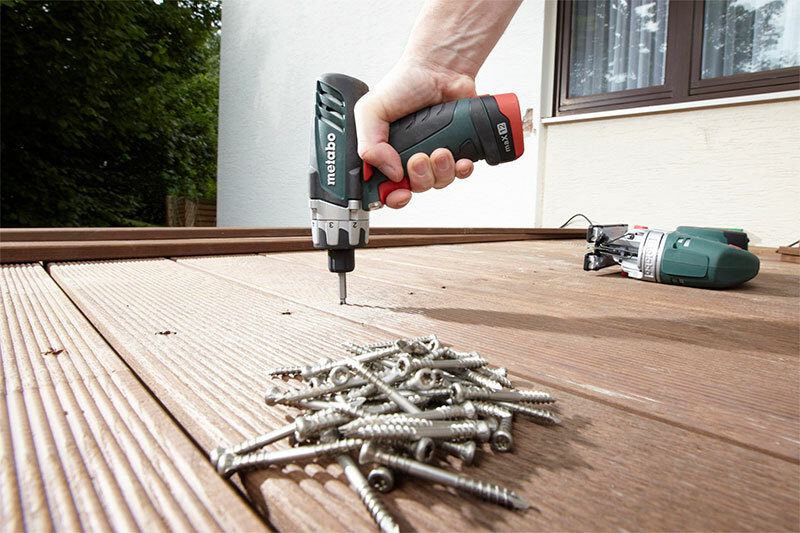
The screwdriver consists of a handle and a cylindrical body. In the latter there is an electric motor, which is driven by the power supply of the mains or the battery. The electric motor can be different in power, which determines the application possibilities of the device. On the handle there is a start button for the motor, from which the tool begins its work. The main moving part is a cartridge capable of expanding the internal size of the socket to a certain diameter and clamping the drills and other devices. If the model is rechargeable, the battery is fixed to the end of the handle with special fixatives.
The principle of the device is to install in the chuck bits with faces and blades to the corresponding slots for screws or screws. The tool is taken in one hand, and the second hand installs the screw to the fastener point. Slightly pressing the screwdriver to the bonnet, the button is pressed and a quick twisting occurs. The torque is transmitted from the motor to the cartridge by a series of gears located inside. In addition to bits for self-tapping into the cartridge, it can be clamped: drills, nozzles for unscrewing nuts, corners for mixing mortars, ice drills.
Unlike a drill in a screwdriver, you can adjust the speed of rotation to very small revolutions, which is convenient for accurate work with wood and plasterboard. The latter material is very fragile and can damage the top layer from the tight fitting of the fasteners. Soft work of the screwdriver allows you to quickly, but gently tighten the screws in such surfaces.
Types of screwdrivers
There are a large number of screwdrivers of various companies on sale. These can be models for minor repairs or professional use. The breadth of their application determines a lot of parameters, but they all differ in network and battery.
Network screwdrivers

They are produced by all famous manufacturers. Due to the lack of battery, such models look very neat. As a rule, they are much cheaper in price. On the functional can cope with all types of work for such a tool. Due to getting direct power from the network, screwdrivers can work continuously( no need to waste time for recharging and you can work as long as you need).Often in this series there are very powerful devices.
Another feature of them is less weight, which is important for professional activities all day long. The hand is not overstrained, and the force is spent only on the clamping of the device at the moment of tightening. But at the work site there must be a 220 V socket. Another constant drawing of the wire can lead to an accidental breakage or cut of insulation, so careful monitoring of the winding condition is required so that there is no electric shock. But the maintenance of such models is cheaper - in the course of time one does not have to buy a new battery or buy a spare battery for a shift. All the maintenance is reduced only to lubrication of gears with solidol.
Advantages:
- compact size;
- light weight;
- high power;
- uninterrupted work;
- is a cheap service;
- low cost compared with battery versions.
Disadvantages:
- attachment to the mains;
- is limited in the length of the cord.
Due to the high power of the machines, but the attachment to the outlet, these screwdrivers are well suited for assembling furniture in the workshop, installing gypsum boards on partitions in small rooms, home repairs. They can be used as mixers for mixing solutions on a construction site, where there is power supply. They will also be useful in case of replacement or tie-in of an additional lock.
It is especially convenient for them to fix the slats on the ceiling in view of the light weight, having tied up the wire on the stepladder beforehand so that it does not pull the tool down. Still network screwdrivers are not afraid of frost, as only lubricant can freeze inside. But it quickly warms up, and the constant use of the tool does not allow it to freeze. This makes it suitable for operation at negative temperatures on construction sites in the winter.
Cordless Screwdrivers
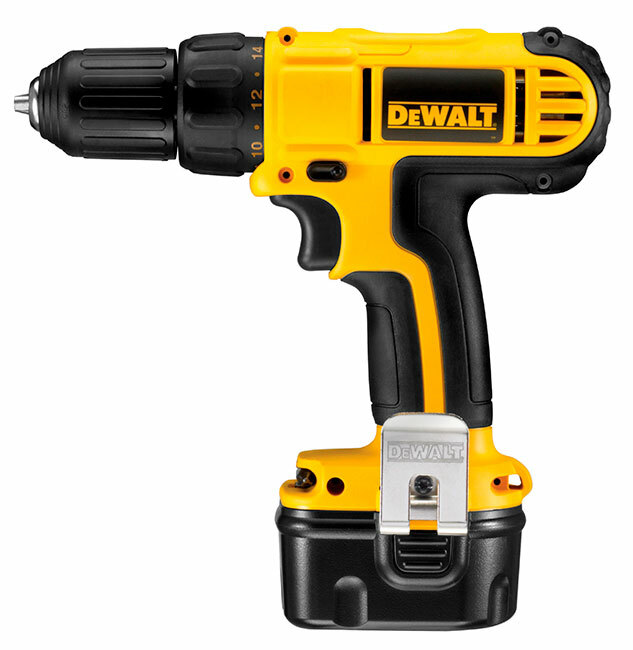
For models with batteries, there is a clear advantage - freedom of action. They can work on the street, a construction site without electrification, in the garage and on the road. Such screwdrivers cost usually higher, and the mass is more because of the battery that is attached to the end of the handle. Such models increase the load on the hand, especially when working at height( ceiling mount, Armstrong, plasterboard over the internal doors).
The battery capacity and type of substance in its structure play an important role. This determines the temperature of the tool and the duration of the work. Often experienced builders purchase two batteries and use them alternately - while one is mounted on the screwdriver, the second is in the recharging device. So you can change them all day long. If there is no outlet nearby, the running time will be limited by the capacity of the two batteries.
Advantages:
- are independent from the socket;
- has powerful models;
- some batteries have a long supply of energy and allow you to work in the cold;
- removable battery allows you to install another one and use them alternately;The
- can be operated away from home or workshop.
Disadvantages:
- high cost;
- limited working time;
- heavy and overload hands when working at height;
- the battery spoils in the cold.
Explicit advantages allow the use of battery types in large-scale construction projects, where a permanent movement of a specialist is required. Such screwdrivers and road brigades that do not know the working conditions on the spot are also suitable. It will be useful to use this tool on the SRT to freely move around the vehicle and not follow the wire. Apply them and on winter fishing to drill holes.
Additional functions of
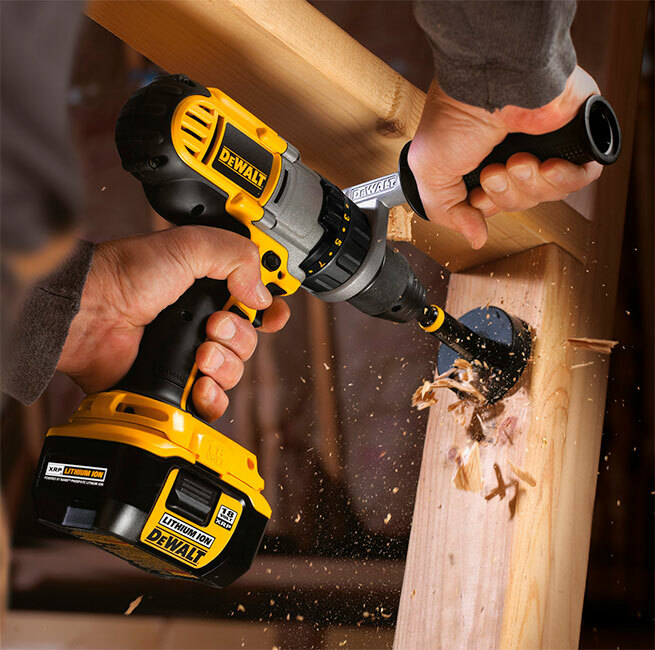
In addition to working with screws and screws, this tool can have additional features that will be useful in the construction and repair areas. For example, some screwdrivers are able to tighten not only the bits, but also the drills. A high maximum rotational speed allows them to be used to make holes in wooden products when making furniture, or to use them as a single device for inserting locks into metal doors.
Other models of screwdrivers may have the option of replacing the cartridge with a tetrahedral axis to attach the heads by tightening the nuts. The head mount socket has a standard size, and the nut girth varies from 10 to 24 mm and is clearly marked on the body. Such a tool is convenient to use for quick installation of scaffolding or other assembly work with a large number of nuts. They also use these devices in a tire shop, where a lot of wheel fixings are required to spin and spin a day.
Additional functions can have both network and battery versions, so they have similar advantages and disadvantages. Due to the presence of a reverse, the tool is suitable not only for assembling, but also for dismantling the nut attachment points.
Screwdriver selection options
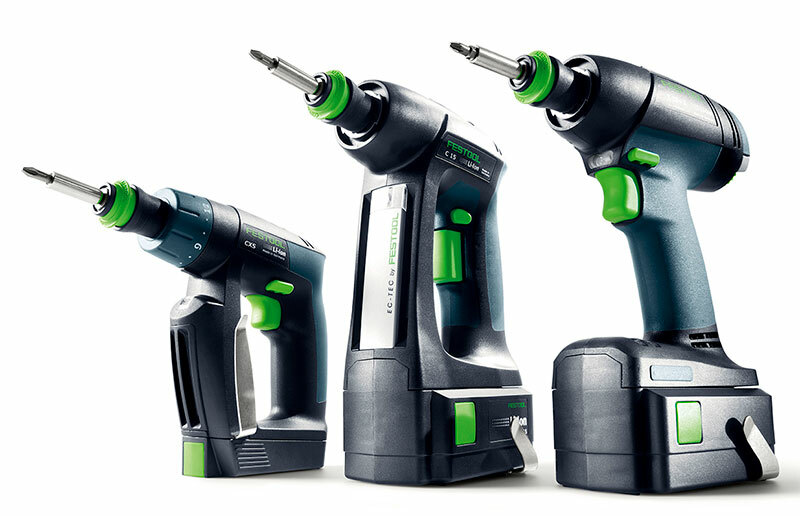
To navigate among the wide variety when buying a screwdriver, you need to know its main parameters and their range for specific jobs:
Torque
The main characteristic that many buyers are interested in is the torque. This value is measured in H * m and transmits the strength indicator with which the fastening element will be twisted. The simplest models can have a value of 10-15 N * m and this will be enough for fast work with self-tapping screws 30-50 mm long for fixing in wood or drywall and profile. If it is necessary to twist longer screws on 70-100 mm, then it is better to buy a tool with an indicator of 35-40 N * m.
Speed and adjustment stages
The second important factor is related to the engine speed. It is measured in revolutions of the axis in one minute. For operation with small self-tapping screws of 30-50 mm, 300-500 rpm will suffice. This will make it possible to fasten the sheets of gypsum board and collect the details of the structures. But in case of double use, like a screwdriver and a drill, it is worth looking for a model with 1200-1300 rpm to ensure a rapid passage of holes. Such models are suitable for working with wood in a furniture factory or inserting locks into iron doors.
But the maximum rotation rate should be complemented by a step-by-step speed control, on which the fineness of the adjustment depends on the work with different materials and fasteners. The number of steps is indicated by 1 + and then the maximum figure follows. If you want to work with the same screws and wood, you can buy a screwdriver with a 10-step adjustment. But in case of a wide variety of materials and the length of the screws it is better to buy 1 + 25.This will allow you to adjust soft twist on fragile surfaces and faster productive work with long screws.
Battery parameters
Another key parameter in the case of battery versions is the type of batteries that can be:
1. Ni-Mh
This battery is capable of operating at minus temperature and suitable for outdoor conditions or premises without heating. But it has a "memory effect", which reduces the resource use of the charge.
2. Ni-Cd
Supports outdoor operation and has an internal resistance, which prevents damage from power surges in the charger. It is an average option for the price and is designed for 1000 charge cycles. Suitable for a private workshop for working with wood or at a construction site. The big weight makes the hand heavier, therefore for ceiling works it is suitable only for a short time.
3. Li-on
Has no "memory" and it can be charged without waiting for a full discharge. It is designed for 3000 cycles. Low weight allows you to apply a screwdriver at a height without overloading the brush. But such a battery is afraid of frost, which makes it unsuitable for operation in unheated rooms.
When choosing a battery, you should pay attention to its capacity, which is indicated in A / h. This directly affects the duration of work without recharging. In the case of small actions( inserting a lock, drilling holes), it is enough 1.2-1.5 A / h, and for professional activities, a capacity of 1.6-3.0 A / h will be required.
Body size and weight
The smaller the handle, the more inconvenient it will be to work with the device. The screwdriver must "sink" in his hand merging with it into a single whole without any discomfort. If you take a tool, it feels like a toy in size, then much they can not do. Ergonomics can be checked only by personally holding a screwdriver in your hand, which everyone has.
But the mass of the device affects fatigue in certain jobs. When the instrument has to be kept constantly in the hands and above the head, then light models of 0.8-1.2 kg are needed. For desktop work where the mass is unimportant, or in the case of drilling, screwdrivers with a weight of 1.5-1.7 kg are suitable.
Cartridge and reverse
The diameter of the cartridge holder determines additional possibilities for drilling. If the tool is purchased only to tighten the screws, then to set the bits, a value of 0.5-10 mm is sufficient. And if there is a need to replace the bit with a drill bit, especially when inserting locks, it is better to find a model with a cartridge chucking up to 13 mm or more.
The reverse allows you to start the rotation of the axis in the opposite direction. With this function, you can not only build and assemble, but also carry out dismantling: twist screws, nuts, other fasteners. This is useful only in case of frequent need, and in rare situations you can do with a screwdriver.
Availability of additional functions for
In case of working with construction scaffolds( assembly / dismantling) or repair shops for cars, it is worth buying a model with the possibility of replacing the rod with a head lock. In other situations, this is a useless option. In expensive screwdrivers build in the backlight, which is useful when working in poorly lit rooms or on the street in the dark. The brightness of such flashlights for all devices is the same. But if the actions are performed exclusively in the day or in the shop in bright light, then you can choose the instrument without lighting.
Which screwdriver to choose

In view of the great variety it is necessary to order all existing models and to facilitate future customers the choice by dividing the screwdrivers into the following categories of work:
1. For furniture production and locking of locks into metal doors, it is better to purchase a tool with 20 N * m and 1200 rev/ min, which will allow you to freely drill and twist. It is necessary to choose a model with a reverse. When assembling, the network version of the food is suitable.
2. When working with gypsum boards, you need to buy a screwdriver with a torque of 30-40 N * m and a 25-step speed control. Often this material is attached to the ceiling, so it's better to take a light device of 1.2 kg. If the repair is carried out in a small area, you can purchase a network model, otherwise you need a battery.
3. In the case of a screwdriver attachment, powerful 40-60 N * m and 500 rpm units are needed to securely fix an element that is much heavier than a screwdriver.
4. At remote sites from electrification it is worthwhile to use batteries with Li-on substance having a large reserve. Often this is a beginning construction or forest houses, so it will come in handy with a power of 20 N * m and a rotation speed of more than 1000 revolutions. In winter it is better to focus on the battery with Ni-Cd.
5. For small works in the country the model with 10-15 N * m and any speed of rotation will do. But the cartridge is better to take 13 mm or more for a wide range of functions.
6. For drilling holes on winter fishing it is worthwhile looking for a screwdriver with a high speed of rotation of 800-1200 rpm and a wide grip of the cartridge up to 13 mm. The battery is preferably Ni-Cd with a capacity of 3 A / h.
How much does the
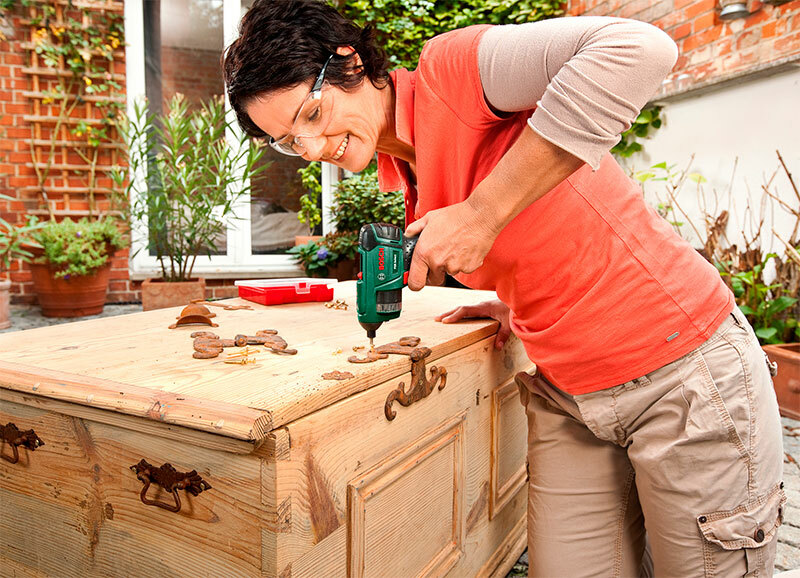
screwdriver cost? The cost of the tool depends not only on the manufacturer's firm, but also on the capabilities of the device itself and the areas of its use. You can target the following price range:
1. For small works at the dacha the network version of the screwdriver will cost from 1000 to 1500 rubles.
2. In furniture manufacture and exit brigades for repair of doors it will be necessary to spend from 4000 to 5000 rubles. Such devices are supplied with a battery.
3. For the installation of scaffolding and assembly of automobile structures, the tool costs 2700-6000 rub.
4. Construction screwdrivers for gypsum board and mixing mixtures, working on battery, will cost from 3000 to 6500 rubles.
5. Models for winter fishing will cost from 2500 to 3500 rubles.



